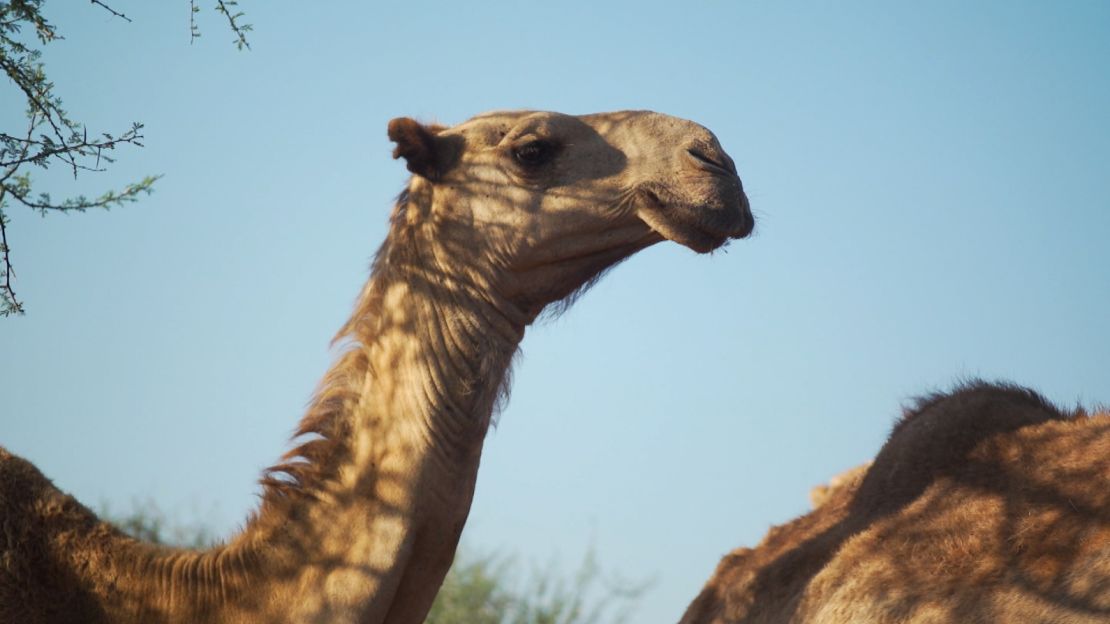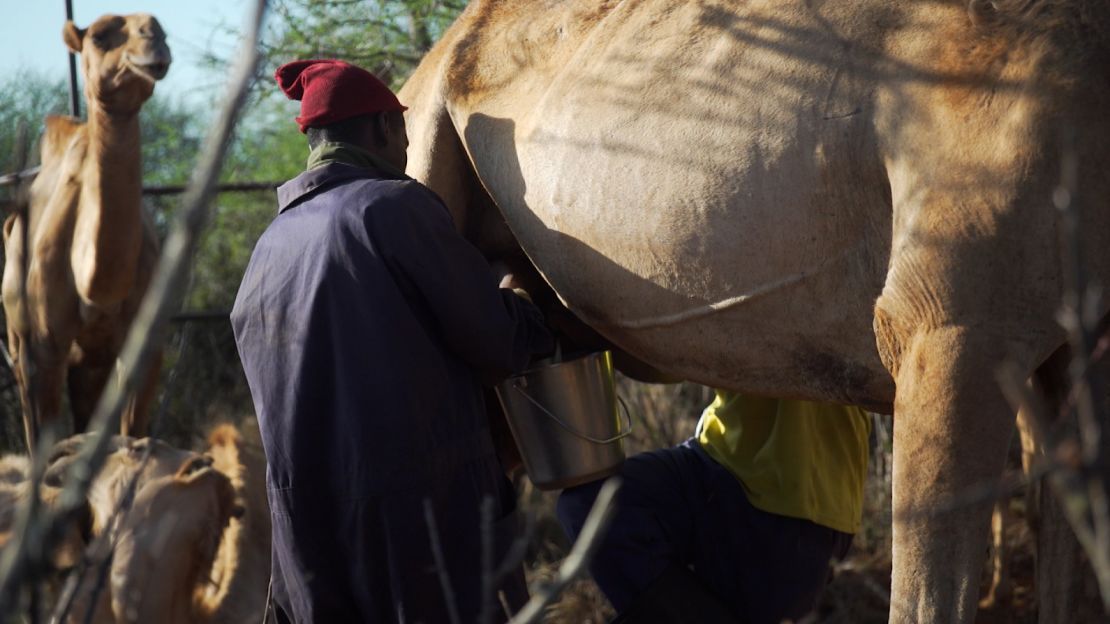While tea may be Kenya’s largest export, a new beverage is brewing in central Nairobi: cappuccinos made with a splash of camel’s milk.
At CJ’s Restaurant, a popular café in downtown Nairobi, manager Omar Shariff has noticed a shift. Where demand for camel milk in the past had largely been driven by the local Somali community who grew up with it, today more and more customers are requesting it.
Now, his menu features drinks such as “camel-ccinos” and “camelattes,” with plans to introduce camel products beyond beverages, such as a camel burger.
Though camel milk is consumed across the world in other regions – including much of the Middle East, parts of Asia and Australia – its popularity in East Africa has largely stayed within rural groups. But wider interest both regionally and globally has begun to grow, with prices leading some to dub the milk “white gold.”
“Camel milk on the international market is incredibly lucrative,” notes David Hewett, a ranch manager for the Mpala Research Center located on the Laikipia Plateau in north central Kenya. “Half a liter of finished milk goes for $10 to $20,” he says, compared to conventional cow’s milk which sells for approximately 50 cents per half liter in the US.
Tapping into an abundant source
The African continent is home to 80% of the world’s camels, with approximately 60% residing in East Africa alone. In Kenya, more than four million camels roam the country’s pastoral lands, a number that has quadrupled since 1999, according to the Kenya Camel Association.
Though a longtime daily staple for some in the region, the beverage lacks an organized and widespread route to market. Instead, the milk is most often found in informal markets around the country.
Even without a formalized supply chain, the sector contributes 10-12 billion Kenyan shillings ($90-108 million) annually to the country’s economy, says Khalif Abey of the Kenya Camel Association.
For one of East Africa’s largest camel milk producers, White Gold Camel Milk, the opportunities for growth are apparent. The company produces 500 liters of milk a day, with company CEO Jama Warsame noting local demand has led the company to diversify into other value-added products like flavored camel’s milk and yogurt.
The appeal of adaptation
With large parts of eastern Africa continuing to weather longer and more intense bouts of drought, camels have also emerged as a climate-friendly alternative source of food.
According to Kenya’s National Drought Management Authority (NDMA), Kenyans living across 23 counties are facing reduced food supplies due to drought and will need food aid within the next six months. Unlike herds of cows and sheep, camels can go 100 miles without water and can maintain their cool in temperatures upwards of 120 degrees Fahrenheit. “It provides a hedge in the dry weather as the pressure is felt on traditional livestock,” states Hewett, because “camels will continue to produce milk.”

Beyond climate considerations, Shariff says a growing clientele of health-conscious consumers have pushed establishments like CJ’s Restaurant to serve the milk.
“We’ve got several people from gym instructors to health nutritionists saying they’ve found a lot of interesting facts about the camel milk and it’s benefits,” he says.
The UN Food and Agriculture Organization says camel milk has triple the amount of vitamin C compared to cow’s milk. Ongoing studies have also shown evidence that the milk can reduce cholesterol and improve digestive disorders.
Getting over the hump
While the potential markets for growth exist, a number of challenges continue to hinder camel milk’s expansion in Kenya. Limited roads and a lack of infrastructure and cold storage prevent large-scale production and delivery of the dairy.

“Where most of the ranchers live, it’s a harsh environment. We have to invest in refrigerated trucks. We have to invest in making a center for collection,” says Warsame.
For a sector built on a network of small family farms, developing the industry to export to profitable markets abroad also presents other hurdles.
“It’s very hard to comply with international standards of disease management and control in a multitude of smallholder-produced milk markets,” notes Hewett.
Despite the challenges, industry leaders are pushing for a formal value chain to be established. With proper infrastructure, the Kenya Camel Association says the sector could be worth an estimated $200 million annually and impact 10 to 12 million households in northern Kenya whose livelihoods rely on these animals.








